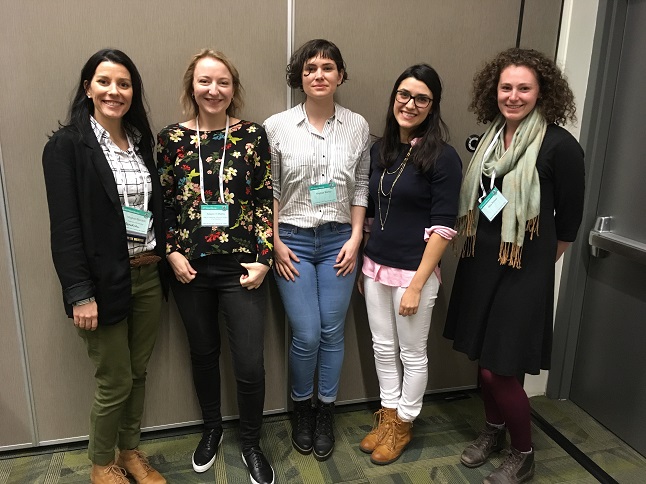Hello all! Hope you are as excited as me to be moving closer and closer to the summer.
After visiting warm and uncharacteristically sunny Vancouver in early April and being welcomed back to St. John’s by a wonderful winter storm that left me stranded in Toronto for two days… summer can’t come soon enough.
The warm weather was not the only thing that got me really excited about being in Vancouver though. I was there for the Society for American Archaeology Annual Meeting which presented inspiring research and insightful new directions for the field of archaeology.
Two sessions that really resonated with me were Mobilizing the Past: Archaeology as Activism (chaired by MUN’s own Meghan Walley) and “So do you, like, wear a hat like Indy?” “Cool, I love dinosaurs!” “My grandpa has a really awesome pot in his attic.” “Can you shut down the pipeline?” – Effective Communication about Archaeology in Three Minutes or Less (sponsored by Public Education Committee and Public Archaeology Interest Group).
The great thing about these international conferences is you get the great opportunity to hear about ideas and research outside your direct area of study that have the potential to sprout in your brain and change the way you think about the work and the discipline. These sessions had this effect on me and I came out of them with the realization that: Archaeology, as much as it has adopted many new technologies to investigate human behavior throughout history, is still stuck in the past, which causes difficulties in making archaeology relevant and communicating archaeological findings to the general public.
This is not to diss everyone in archaeology!!! Obviously, there are archaeologists out there who are doing excellent outreach and producing archaeological work that is influencing public policy, education, and social development! But I did go to many paper and poster presentations that were heavy on jargon, bar graphs, and diagrams of archaeological layer profiles, that didn’t answer the question “why should I care?” or maybe more specifically “why should non-archaeologists care?”
Some of these presentations were particularly distancing. In fact, one day, I heard two geochemists (outsiders) who were presenting in an archaeological sciences session talking to each other and one asked the other “Are you an alien too?” I can just imagine what Indigenous community members would have felt like if they had gone to these sessions which were rich in stable isotope data and poor in effective communication.
I heard many archaeologists complaining about how difficult it is to reach the public on a personal level and interesting them/inciting them to care. And while this was a common theme, this conference remains very exclusive. You had to pay a high price to get in, not only to attend, but also to become a member of the association to even be eligible to present. They didn’t make it easy for outsiders to attend.
One sentence I found myself repeating a lot is that “archaeology needs a face lift”.
I think that there could be a couple things that we could do as academic archaeologists to make these international conferences a little bit more accessible.
- Have students organize conference sessions! This is not the norm as I came to find out, yet it is often students coming into the field that have the freshest ideas on how to communicate their research to a larger audience maybe due to the fact that we are connected to a larger global community by the grace of our divers networking spheres.
- TWEET! INSTA! FLICK’R! YOUTUBE IT! Get the message out there. Show people what you do day to day! Show why our work matters! Show who it matters to! Show why the past is political as a speaker said, just think about the famous: “Make America Great… AGAIN”. Archaeology can be used to contextualize issues we are dealing with today! These short formats of communicating research are the best ways to communicate our research to the public. Let’s use them!
- HOLD MORE PUBLIC SESSIONS! Invite the people in! I guarantee, they are interested.
- KNOW YOUR AUDIENCE! Even if you are presenting in a session on Archaeological Sciences, recognize that many people that will be attending will be outsiders and may not be super familiar with the field’s lingo. Make your talks more concise, sometimes less is more.
So those are my two-cents. Let’s keep the conversation going! I know I’ve learned a lot and will be doing my own part to communicate my research to a broader audience.
Thanks to Memorial’s Quick Start Fund through the Office of Public Engagement, I’ve been given the chance to travel to Sechelt, British Columbia, this summer to meet with the shíshálh band and council and share my Master’s research results with them and hopefully start a dialogue with them about how we can work together in the future. The challenge will be to present in a format that invites questions and conversation, accessible to non-archaeologists.
TTYL,
~Natasha
